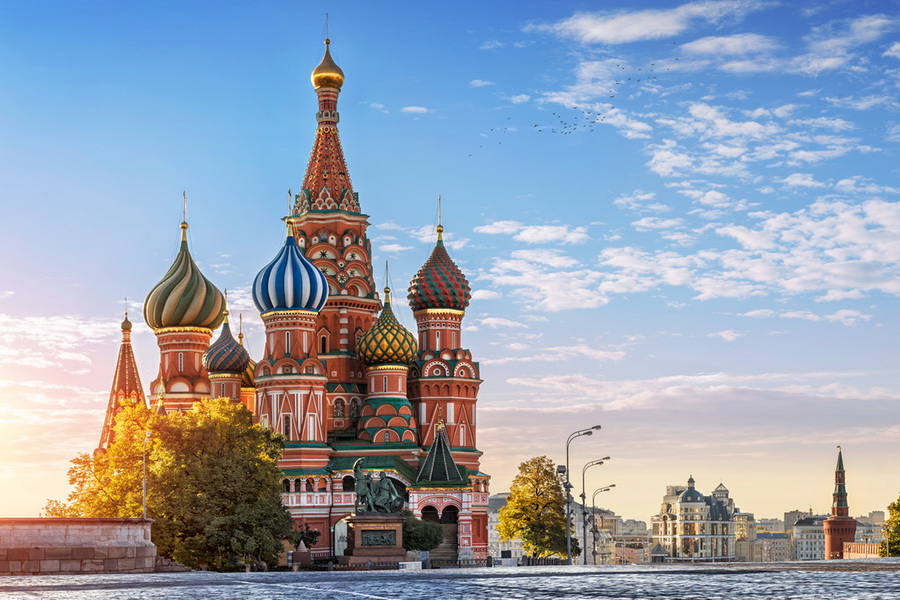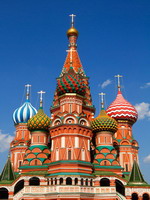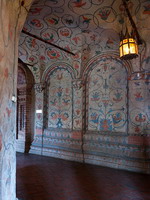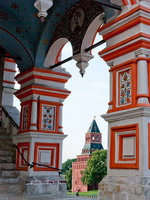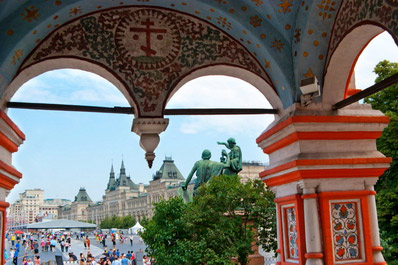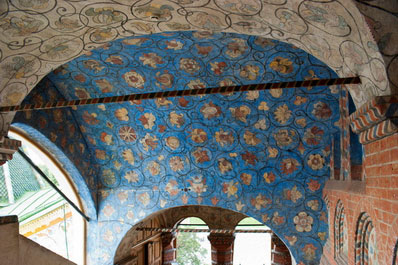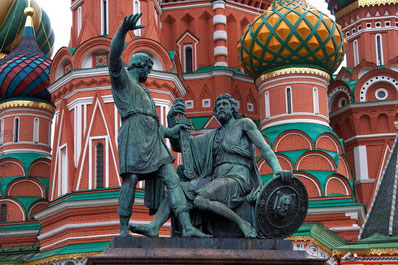храм христа спасителя на английском языке
A short history of Christ the Saviour Cathedral in Moscow
Christ the Saviour Cathedral ( Храм Христа Спасителя ) is the mother cathedra or see of the Russian Orthodox Patriarchate, whose current primate is His Holiness Patriarch Kirill of Moscow and all Russia. The cathedral is located on the north bank of the Moskva River to the immediate southwest of the capital’s Kremlin fortress, where, inside the Dormition Cathedral (Uspenskiy Sobor) all Russian tsars and tsarinas have been crowned and anointed. Christ the Saviour is the tallest Orthodox cathedral in the world, standing at 103 metres (338 feet) above the pavement. The main sanctuary (temple) can fit over 10,000 standing worshipers.
On Christmas Day in 1812, Russian Imperial forces drove the last of Napoleon Bonaparte’s Grand Army off of Russian territory — once 600,000 men strong, now a mere 20-30,000 remained. In thanksgiving, His Imperial Majesty Emperor Alexander I (1777-1825, r. 1801-1825) signed a Manifesto ordering the construction of a magnificent Cathedral in honor of Christ the Savior in Moscow as a thanksgiving to God and to honor the victorious Russian army.
The Emperor’s Manifesto reads, in part:
To signify Our gratitude to Divine Providence for saving Russia from the doom that overshadowed Her and to preserve the memory of the unheard of efforts, loyalty and love for our Faith and Homeland displayed during these difficult days by the Russian people, We hereby intend to build a Cathedral in honor of Christ the Saviour in our capital city of Moscow, wherein the appropriate Decree will be issued in due time. May the Almighty bless Our intentions. May our intentions be fulfilled. May the Cathedral stand for many centuries. Let the incense of thanksgiving, together with love and a desire to imitate the feats of our anscestoral feats, burn before the holy altar of God for many generations.
After over 40 years of initial construction paid for by donations from across the Russian Empire and with imperial patronage, the cathedral was first consecrated on 26 May 1883 in the presence of Emperor Alexander III and senior members of the Imperial Family along with numerous Church and foreign dignitaries. Demolished on Soviet dictator Stalin’s orders on 5 December 1931, the site was initially envisioned to hold a colossal monument to Marxist-Leninism, a gaudy skyscraper called the “Palace of Soviets” raised to the memory of Lenin. Here is a brief video showing the cathedral’s destruction.
Plans for the “palace” stalled during the Great Patriotic War (WWII), and afterwards the foundations were turned into the world’s largest open-air swimming pool, in which numerous Soviet citizens drowned. Following the collapse of the Soviet Union in 1991, the newly-free Moscow Patriarchate announced plans to rebuild the demolished Cathedral on its pre-revolutionary model and scale. Funds poured in from all across the former Russian Empire, including from Russian emigres living in Western Europe and the Americas. Construction was finished by 2000, and HH Patriarch Alexey II consecrated the new cathedral along with numerous other Russian clergy on 19 August 2000. Besides functioning as the Patriarch’s cathedral church, the building is a monument to the suffering of the Russian people under communism and a symbol of the resurgence of Orthodoxy in Russian cultural life following 1991. Every year, the President and Prime Minister of the Russian Federation attend Nativity (7 January on the civil calendar/25 December on the Julian) and Paschal midnight services in the cathedral, and are greeted with an address by the Patriarch, who they in turn address with the traditional festive greeting “Christ is Risen!”, “Truly He is Risen!” (Христос Воскресе! Ваистину Воскресе!).
Nigel Fowler Sutton notes
храм христа спасителя
1 Храм Христа Спасителя
2 храм Христа Спасителя
3 Храм Христа Спасителя
4 храм
См. также в других словарях:
храм христа спасителя — спас на гаражах Словарь русских синонимов. храм христа спасителя сущ., кол во синонимов: 1 • спас на гаражах (1) Словарь синонимов ASIS … Словарь синонимов
Храм Христа Спасителя — У этого термина существуют и другие значения, см. Храм Христа Спасителя (значения). Кафедральный православный собор Кафедральный Соборный храм Христа Спасителя (собор Рождества Христова) … Википедия
Храм Христа спасителя — Кафедральный Православный храм Кафедральный Соборный храм Христа Спасителя (во имя Рождества Христова) Храм Христа Спасителя Вид Храма Христа Спасителя … Википедия
Храм Христа Спасителя — кафедральный собор г. Москвы (архитектор К.А. Тон, 1794–1881). 25 дек. 1812 имп. Александр I издал манифест «о построении в Москве церкви во имя Христа Спасителя в ознаменование благодарности к Промыслу Божию за спасение России от врагов»… … Религии народов современной России
Храм Христа Спасителя — построен в Москве по обету имп Александра Благословенного, пожелавшего воздать этим благодарность Богу Промыслителю, спасшему Россию от нашествия французских полчищ в 1812 г. и увековечить в памяти потомства эту достопамятную тяжкую годину … Полный православный богословский энциклопедический словарь
Храм Христа Спасителя — в Москве. Был построен на месте Алексеевского монастыря у Пречистенских ворот (1832 1889), автор проекта и руководитель работ русский архитектор К. А.Тон. Построен в память о войне 1812 года. В архитектуре собора были сделаны попытки возродить… … Строительный словарь
Храм Христа Спасителя — в Москве. Был построен на месте Алексеевского монастыря у Пречистенских ворот (1832 1889), автор проекта и руководитель работ русский архитектор К. А.Тон. Построен в память о войне 1812 года. В архитектуре собора были сделаны попытки возродить … Архитектурный словарь
храм Христа Спасителя — хр ам Христ а Спас ителя … Русский орфографический словарь
храм Христа Спасителя — … Орфографический словарь русского языка
St. Basil’s Cathedral, Moscow
One of Russia’s most recognizable architectural masterpieces is Pokrovsky Cathedral, better known as St. Basil’s Cathedral in Moscow. This Orthodox church, which has earned international recognition for its unique beauty, is located in the historical center of Russia’s capital. Its structural distinctiveness evokes endless admiration from guests and justifiable pride in Muscovites, who are honored to call this world masterpiece their own.
The cathedral was built from 1555-1561 by order of Tsar Ivan the Terrible, who vowed that he would build a church if the city of Kazan were captured from the Kazan Khanate. The people initially called the Cathedral Pokrov na Rvu (Moat Cover) as it was built next to a deep moat that ran along the eastern wall of the Moscow Kremlin.
In one of the cathedral’s chapels lies St. Basil the Blessed, the most revered holy fool in Russia from whom the church received its unofficial name. Legend has it that he collected money for the construction of Pokrovsky Cathedral and was known to throw coins over his right shoulder on Red Square in Moscow, which no one, not even the thieves, dared to touch. In August 1552, shortly before his death, St. Basil gave the collected money to Ivan the Terrible, who ordered a temple be built on the site.
Although the church was built by two Russian architects, Postnik and Barma, their identity only became known in 1895, when records were found in a historical manuscript collection of the 17th century. According to legend, Ivan the Terrible, upon seeing the construction of St. Basil’s Cathedral completed according to the architects’ design, was so delighted with its beauty that he ordered the architects be blinded so that they could never again build a temple equal in splendor to Pokrovsky Cathedral.
At St. Basil’s Cathedral, facts and legends have become enmeshed. According to another legend, Napoleon wished to move this architectural miracle to Paris. As the technology of the time was unable to cope with this task, the French emperor instead ordered his army to blow up the church, along with the Kremlin, before retreating. The Muscovites tried in vain to extinguish the lighted wicks, but providence intervened through a sudden torrential downpour, which helped to dowse the fire and save the church from destruction.
St. Basil’s Cathedral is a symmetrical ensemble of eight colorful, pillar-shaped churches surrounding the ninth and highest chapel, which is crowned with a pergola. Each of the eight churches is named after a saint on whose holy day a significant event of Ivan the Terrible’s Kazan campaigns took place. The central church is dedicated to the Feast of the Intercession of the Mother of God, for it was on this day that Kazan was stormed. The multihued churches are crowned with bulbous domes, each of which is unique in its architectural design. Each dome is further decorated with cornices, arched semi-circles, windows and niches.
St. Basil Cathedral’s interior is equally impressive. In the 1920s, it received the status of a museum, and since 1934 has been listed as a branch of the State Historical Museum. The cathedral-museum has nine iconostases, which contain about 400 icons of the 16th-19th centuries and represent the best examples of Novgorod and Moscow iconography. In addition to icons, the cathedral holds portrait and landscape paintings, church utensils, various weapons from the reign of Ivan the Terrible and an interesting collection of bells cast in Russia, Belarus, Holland, France and Germany. Among the most valuable exhibits is a 17th-century chalice (a liturgical vessel for consecrating wine) that belonged to Tsar Alexey Mikhailovich. The colors and detail of the frescoes splayed across the churches’ interior likewise leave many visitors speechless.
St. Basil’s Cathedral in Moscow attracts millions of tourists each year and has been counted among Russia’s UNESCO World Heritage Sites since 1990.
Cathedral of Christ the Saviour – Xрам Христа Спасителя
Cathedral of Christ the Saviour – Xрам Христа Спасителя
As this is my first real post on the blog, I decided to talk about the first cultural site that really thrilled me: the Cathedral of Christ the Saviour. Actually, the very first thing which had arouse in me enthusiasm was the Red Square but everybody knows or has, at least, heard something about it. While, the Cathedral of Christ the Saviour is quite less famous in the world.
It is situated on the northern bank of the Moskva river and the nearest metro station is Kropotkinskaya. But thanks to its very central position you can also reach it on foot, because it’s just few minutes walk from the Kremlin. Furthermore, you cannot get lost because it is the tallest Orthodox Christian church in the world (103 metres) and you will be guided by its gold onions: cupolas typical for Russian architecture.
But the cathedral is not so old as you can imagine. Indeed, it is the result of a brand new project, realized in the Nineties. I’ll briefly tell you its troubled history. The original project is due to the Tzar Aleksandr I, who decided to commission it after the defeat of Napoleon in the 19th century, in honour of Christ the Saviour: “to signify Our gratitude to Divine Providence for saving Russia from the doom that overshadowed Her”. But the brother of Aleksandr I, Nikolaj I, when succeeded to him, changed completely the project with a new design, taking as inspiration the Hagia Sophia Church in Istanbul.
The cathedral was consecrated in 1883 but it didn’t survive for long time. Indeed, in 1931, Stalin decided to demolish it in order to build the Palace of the Soviets (never created). Under the government of Nikita Khrushchev it was transformed into a huge public swimming pool. Only in February 1990, the Russian Orthodox Church received the permission from the Soviet Government to rebuild the Cathedral and the reconstruction finished in 2000.
If from the outside it seems magnificent and sumptuous, the inside is really breathtaking. The predominant colours are gold and red and all the walls and domes are painted with frescas and religious images. There are always many people praying inside and this is a great way also to understand the Russian culture.
I really suggest everybody who is in Moscow or wants to visit this city, to go to have a look to this magnificent.
You will not regret!
This blog was brought to you by Elena, an intern and a student at Liden and Denz
Христа+Спасителя+Храм
21 викарий Иисуса Христа
22 Влахернский храм
23 Вход во храм Пресвятыя Владычицы нашея Богородицы
24 день Господа нашего Иисуса Христа/
25 единосущность Христа Богу
последователь [приверженец] учения о единосущности Христа Бога — Homoousian(ist)
приве́рженность учению о единосущности Христа Бога — Homoousianism
26 Золотой храм
27 Иерусалимский храм
28 Перенесение из Едессы в Константинополь Нерукотворного Образа Господа Иисуса Христа
29 Перенесение из Едессы в Константинополь Нерукотворного Убруса Господа Иисуса Христа
30 Святых пяти ран Господа нашего Иисуса Христа
31 триверхий храм
32 тысячелетие царствования Христа на Земле
33 тысячелетнее царство Христа на Земле
34 уничижение Христа
35 Ученики Христа/
36 храм
клетский храм — cellular church, a church of square cottage-like shape
Храм во имя Святых Отцов семи Вселенских соборов — the church in the name of the Holy Fathers of the Seven Ecumenical Councils
Храм всех святых, в земле Российской просиявших — the Church of all the Saints who shone forth in the Land of Russia
храм Эману-Эль (синагога в г. Нью-Йорке; принадлежит одной из старейших в городе конгрегаций иудаистов-реформаторов ( the Hebrew Congregations (Reform) ) ; одна из крупнейших в мире: рассчитана на 2500 мест в главном молельном помещении; уникальные бронзовые решётки на вратах у ковчега Завета, витражи; построена в 1929) — Temple Emanu-El
37 храм Василия Блаженного
38 храм Василия Блаженного в Москве
39 храм-памятник
Свято-Покровский храм-памятник в Оттаве — the Protection of the Holy Virgin Memorial Church, Ottawa
40 Церкви Христа/
См. также в других словарях:
Христа Спасителя Храм — в Москве, построен в 1837 83 на месте бывшего Алексеевского монастыря по проекту К. А. Тона (1832) как храм памятник, посвящённый Отечественной войне 1812. Сооружённое в так называемом русско византийском стиле, грандиозное по масштабам (высота… … Энциклопедический словарь
ХРИСТА СПАСИТЕЛЯ ХРАМ — В Москве, построен в 1837 83 на месте бывшего Алексеевского монастыря по проекту Ю. А. Тона (1832) как храм памятник, посвящённый Отечественной войне 1812. Сооружённое в т. н. русско византийском стиле, грандиозное по масштабам (высота 103,3 м)… … Русская история
Христа Спасителя храм — в Москве, построен в 1837 83 на месте бывшего Алексеевского монастыря по проекту К.А. Тона (1832) как храм памятник, посвящённый Отечественной войне 1812. Сооружённое в так называемом русско византийском стиле, грандиозное по масштабам (высота… … Иллюстрированный энциклопедический словарь
Христа Спасителя (храм) — Кафедральный Православный храм Кафедральный Соборный храм Христа Спасителя (во имя Рождества Христова) Храм Христа Спасителя Вид Храма Христа Спасителя … Википедия
Христа Спасителя храм — воздвигнут в 1839 1883 годах на берегу реки Москвы неподалеку от Кремля в память Отечественной войны 1812 года. Архитектор К.А. Тон. В оформлении принимали участие крупнейшие художники и скульпторы 19 века: П.К. Клодт, Ф.П. Толстой, В.В.… … Православный энциклопедический словарь
ХРИСТА СПАСИТЕЛЯ ХРАМ Москве — ХРИСТА СПАСИТЕЛЯ ХРАМ в Москве построен в 1837 83 на месте бывшего Алексеевского монастыря по проекту К. А. Тона (1832) как храм памятник, посвященный Отечественной войне 1812. Сооруженное в т. н. русско византийском стиле, грандиозное по… … Большой Энциклопедический словарь
Храм Христа Спасителя (во имя Рождества Христова) в Москве — Кафедральный собор Московской епархии и всей Русской православной церкви – храм Христа Спасителя (во имя Рождества Христова) в Москве закладывался трижды и трижды на протяжении почти двух столетий освящался его первый камень. Идея… … Энциклопедия ньюсмейкеров
Храм Христа Спасителя — У этого термина существуют и другие значения, см. Храм Христа Спасителя (значения). Кафедральный православный собор Кафедральный Соборный храм Христа Спасителя (собор Рождества Христова) … Википедия
Храм Христа Спасителя (Москва) — Кафедральный Православный храм Кафедральный Соборный храм Христа Спасителя (во имя Рождества Христова) Храм Христа Спасителя Вид Храма Христа Спасителя … Википедия
Храм Христа спасителя — Кафедральный Православный храм Кафедральный Соборный храм Христа Спасителя (во имя Рождества Христова) Храм Христа Спасителя Вид Храма Христа Спасителя … Википедия

